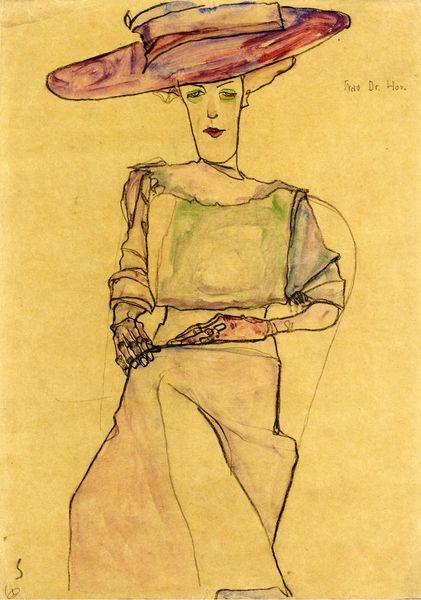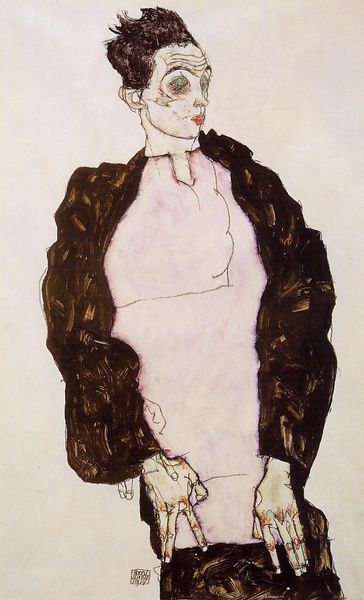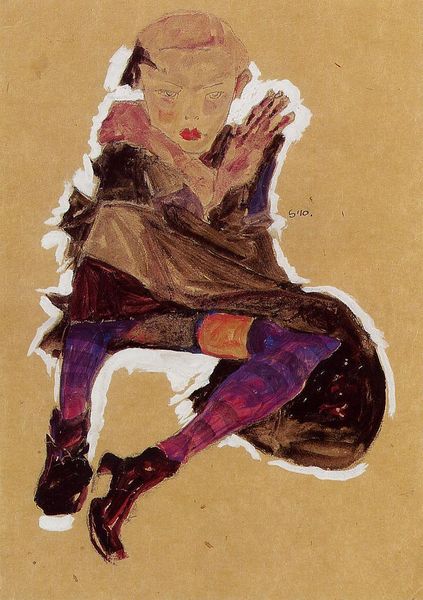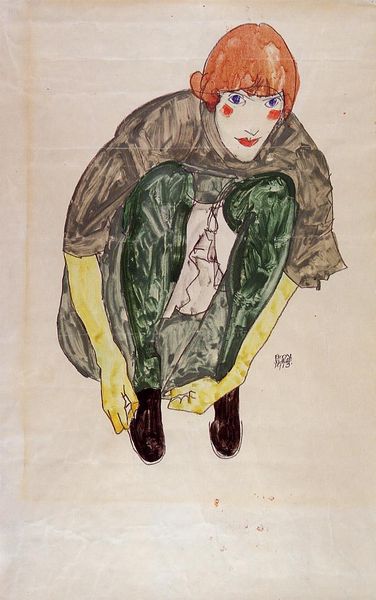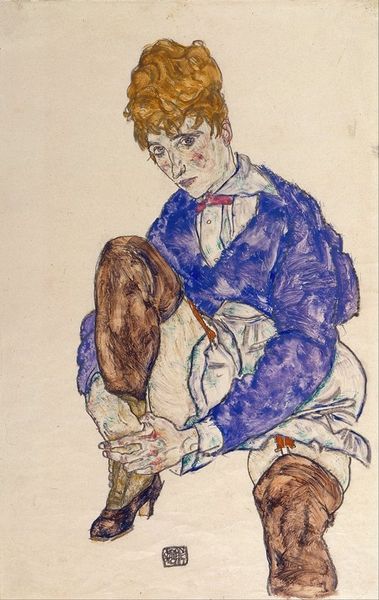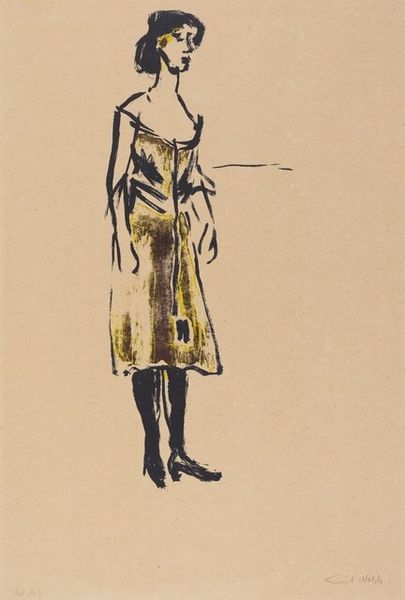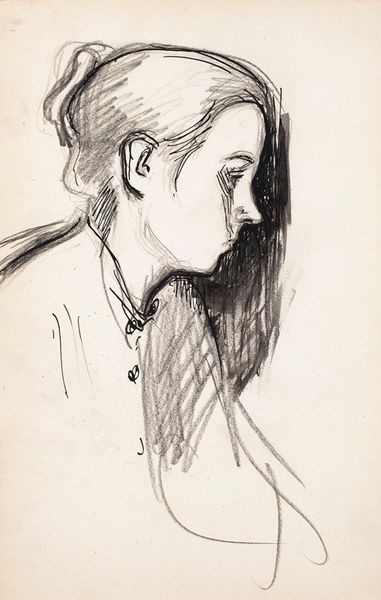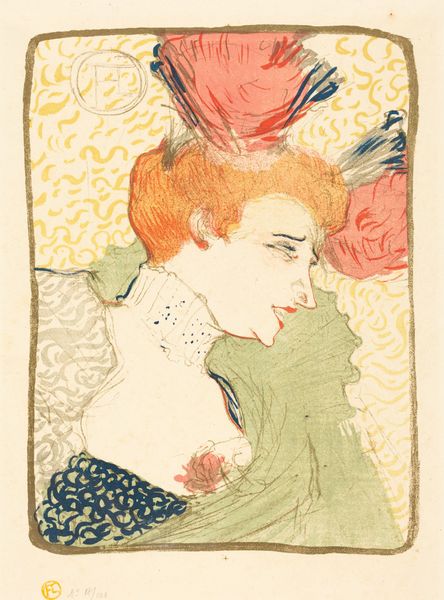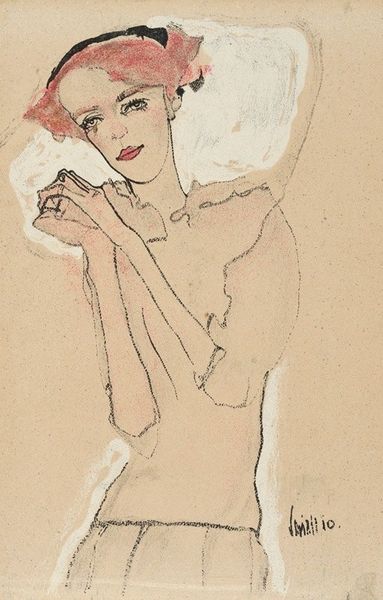
painting, watercolor
#
portrait
#
painting
#
figuration
#
watercolor
#
expressionism
#
nude
Dimensions: 47.8 x 32 cm
Copyright: Public domain
Editor: This is Egon Schiele’s "Sitting Woman in a Green Blouse," a watercolor from 1913. The color palette is very limited. The drawing is sparse but raw. I'm interested in understanding Schiele’s intentions more deeply. How do you interpret this work, specifically looking at its materiality? Curator: It is essential to analyze Schiele's materials to really engage with the socio-economic background of art production in the Expressionist moment. Notice how he’s using watercolor; the deliberate choice, its availability and cost are telling. It speaks to a departure from the lavish oil paintings that signified wealth and tradition, favoring something cheaper. Consider too that the paper, judging from its tone, likely isn’t the highest quality. The whole feeling is of embracing accessibility of making and materials in times of great shifts in the society. Editor: So, are you suggesting that the choice of watercolor and, let's say, the 'low' quality of the paper represents a conscious turn away from bourgeois conventions in favor of greater democratic production, instead of considering them purely for expressive effects? Curator: Precisely. We see labor reflected not just in the subject but in the conscious deconstruction of artistic practices, in the deliberate adoption of readily accessible supplies. He reduces material cost, reflecting perhaps on artistic creation becoming more attainable, challenging boundaries. Editor: I see… It’s like Schiele’s materials themselves are making a statement about the changing art world, using less-precious mediums, focusing attention on labor of creation itself rather than art's status as commodity. I never thought about it that way! Curator: Considering these social shifts encourages you to question not just ‘what’ the art shows, but how and why it was produced. It gives this woman and Schiele a broader socio-economical role within his production!
Comments
No comments
Be the first to comment and join the conversation on the ultimate creative platform.
